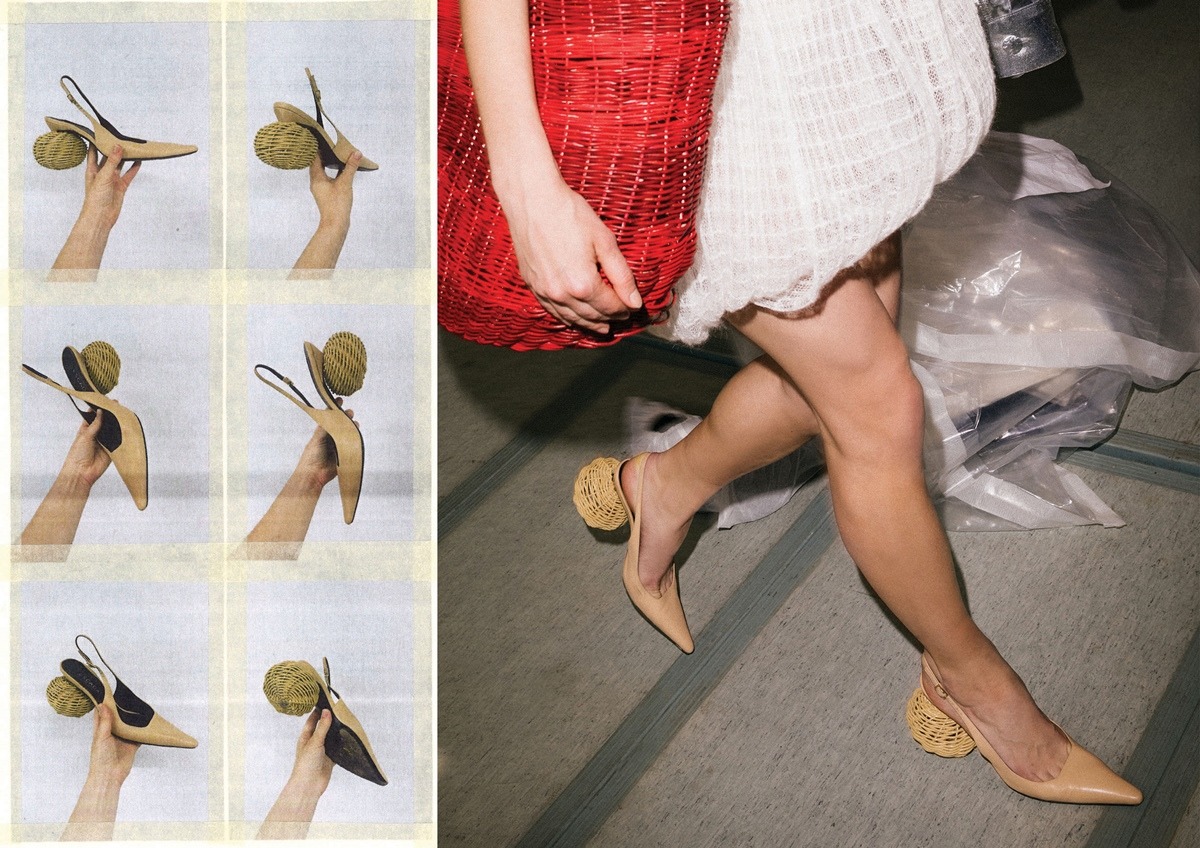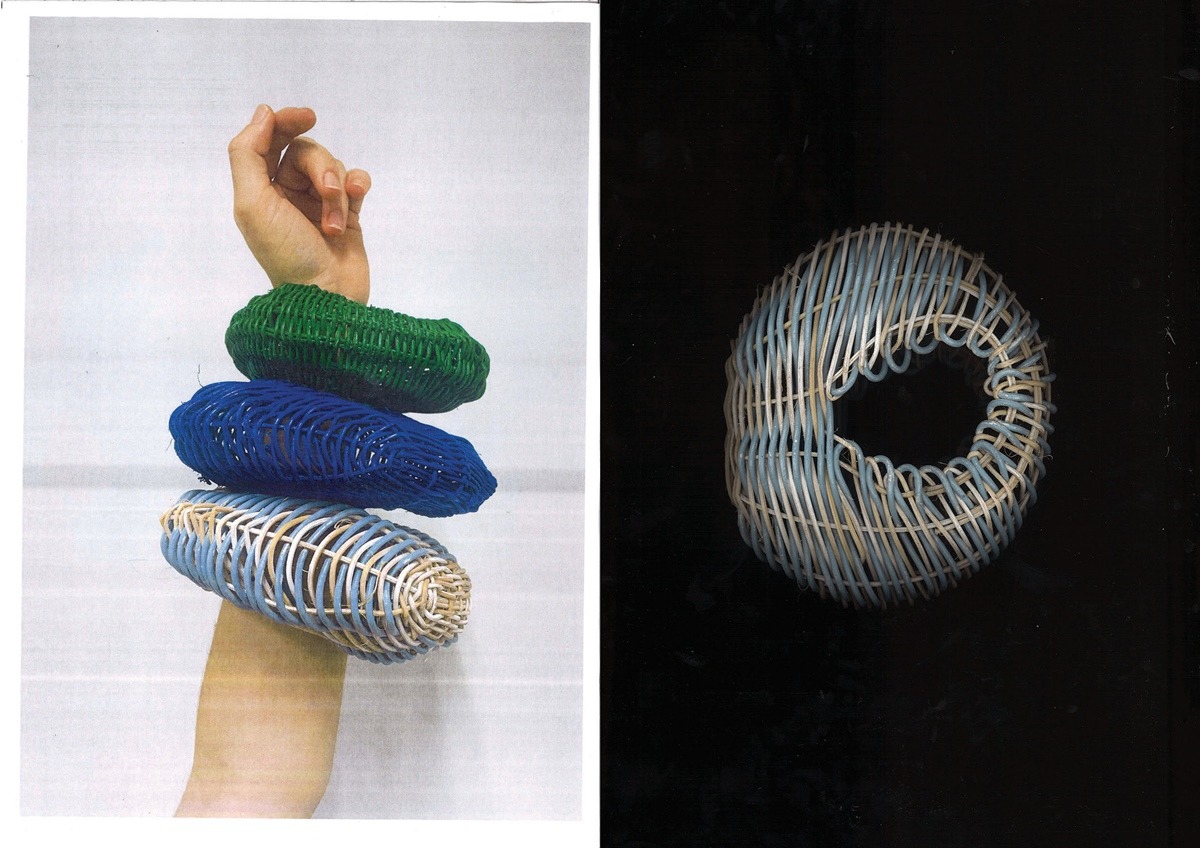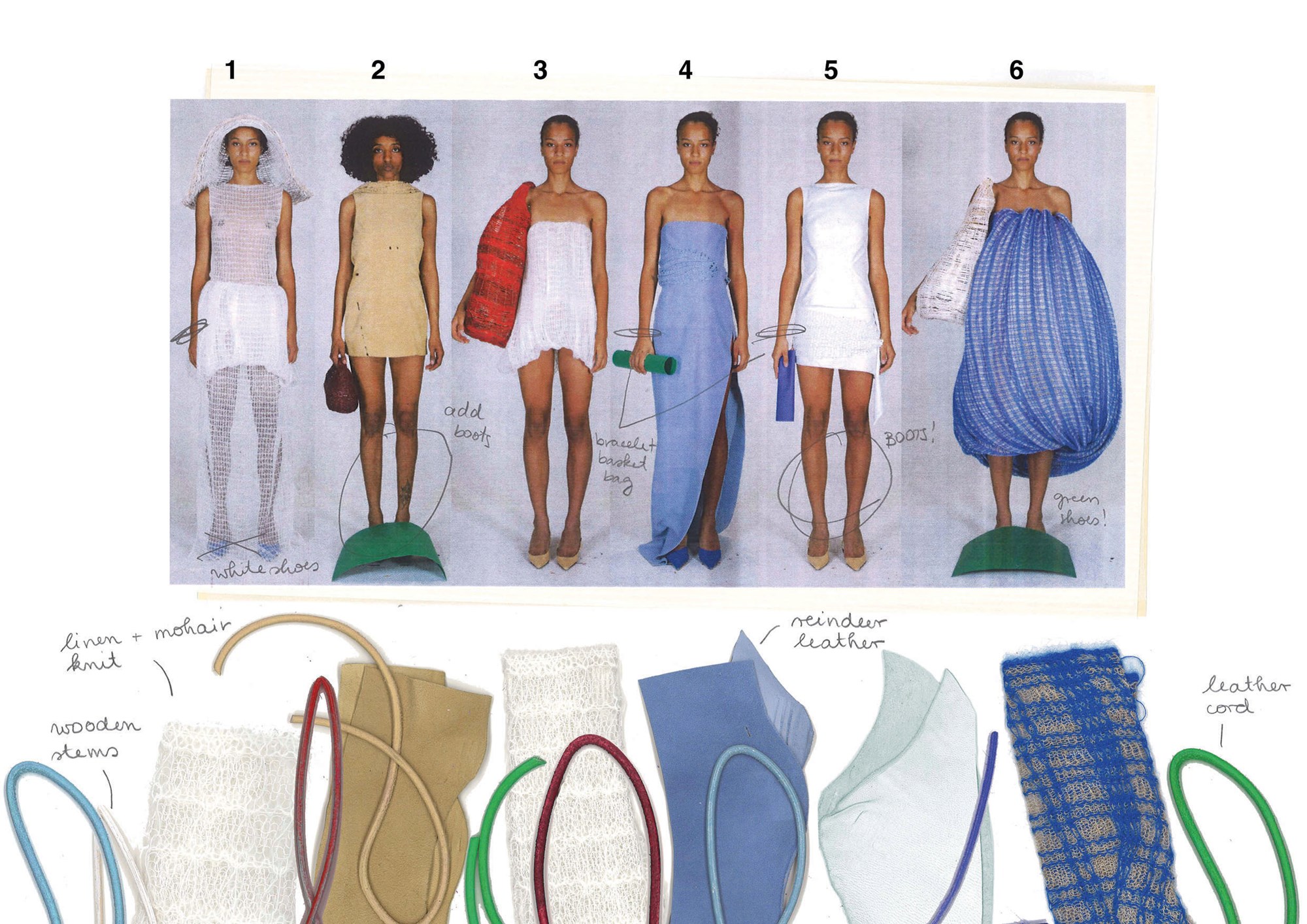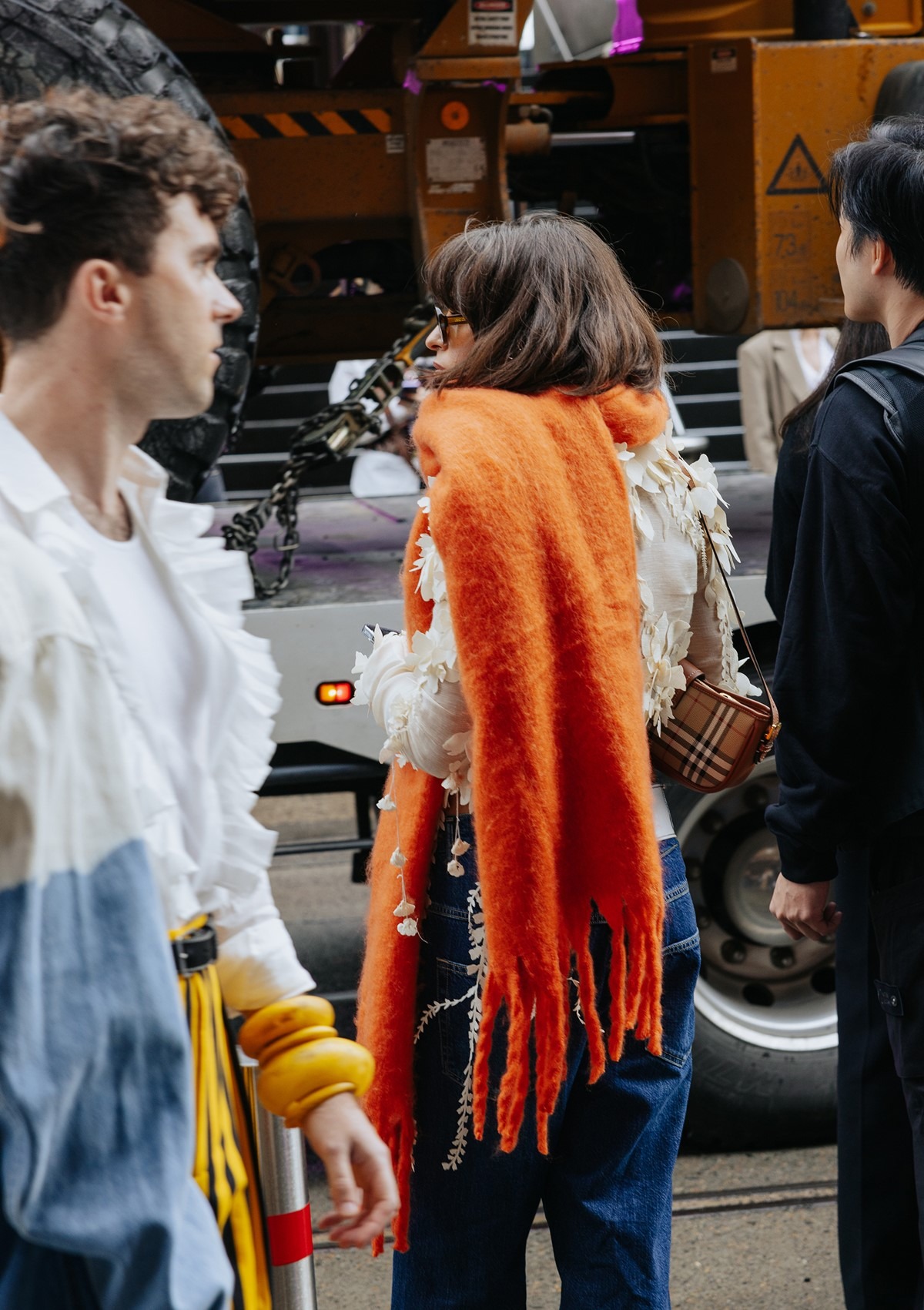

Young fashion designer Neža Simčič has dedicated her work to exploring traditional Slovenian crafts and translating them into a contemporary fashion context. Growing up on the Slovenian-Italian border, she merges the heritage of handcraft with the elegance of Italian style, creating collections that emphasize the importance of preserving cultural and artisanal heritage. In February, Simčič joined the Italian fashion house Bottega Veneta, where she works on designing small leather goods, continuing to develop the idea that beauty, skill, and longevity can coexist harmoniously with modernity.
The crafts passed down to us by previous generations hold something special, a quality that, beyond the beauty created by human hands, evokes genuine admiration. Handwork, woven with devotion, patience, and the pursuit of perfection, requires skill, while endless trials and errors lead to the precious realization that there are no shortcuts to what truly matters. The unpredictable process of learning, into which we stitch the most valuable currency of our lives, time, nurtures respect for those who walked this path before us and reminds us that beauty is much more than what meets the eye. In an era of fast fashion, fast food, and fleeting information, when one can travel across the world in less than a day, immersing oneself in the slowness of handcraft feels like an act of resistance. In a world ruled by instant solutions, where distraction and impatience dominate, handcraft reminds us that the outcome is not the most important part of creation, the journey is.
The young Slovenian designer has devoted her practice precisely to that journey, exploring traditional Slovenian crafts such as knitting, weaving, and woodwork, and skillfully translating them into a modern visual language. It all began with her graduate collection Roza at the Faculty of Natural Sciences and Engineering in Ljubljana, where she graduated in 2021. Simčič set out in search of what had shaped her. Growing up in Nova Gorica, on the Slovenian-Italian border, she lived between two parallel experiences admiring the impeccably dressed Italian women and spending time with her grandmother, who dedicated her days to knitting and crocheting. Through her graduate collection, she set out to find herself and reconcile all the seemingly opposing sides of her identity that had once felt irreconcilable.

“I come from an environment where fashion isn’t deeply rooted in everyday culture, but craftsmanship is. Many people from my region grew up surrounded by the skilled hands of their parents or grandparents who knew how to knit, weave, or sew. That’s how I first discovered the world of garment-making and fashion. As a child, I spent a lot of time with my grandmother, who still says I couldn’t sit still until she handed me her knitting needles. That’s when my love for craft began,” says Neža. After Ljubljana, life took her to Helsinki, to Aalto University, where she completed her master’s degree in fashion design. Her exploration of traditional Slovenian crafts took on a new dimension there, it became a bridge between her studies and home, a way to stay connected to her roots and culture, a way to feel closer to home even when almost an entire continent stood between them.
“It wasn’t until I moved to Finland that I truly realized how strong my connection to Slovenian crafts was. Using traditional techniques in my work became a way of expressing nostalgia, a quiet sign of how much I missed home, a way to always carry it with me,” the designer explains. “Whenever I returned to Slovenia, people were often surprised by my interest in Slovenian crafts and would sometimes respond with, ‘Who even likes those old things anymore?’ I thought to myself: if I don’t try to preserve and reinterpret these techniques, who will? Through my approach, I pay tribute to the technique in its authentic form, but I use it in a way that makes the garment look modern and relevant. By changing materials, colors, and shapes, I want to show that tradition can still carry a sense of allure and contemporaneity.”

She incorporated the idea of a cultural “passport” into her collection Mara, which also served as her master’s project. By exploring the relationship between cultural preservation, the global influence of the West, and the gradual disappearance of traditional textile crafts particularly Slovenian ones, Simčič placed craftsmanship at the service of high fashion. The garments in the collection were inspired by the ancient tradition of wooden object and basket making, skillfully woven into a contemporary design context. At the time, the outcome was less important than perfecting the technique. “I’m an optimist, and I like to believe that fashion can help preserve craftsmanship. There are so many examples where craft remains at the very heart of fashion expression, just look at couture, where every stitch celebrates the skill of human hands,” says the designer. “Fashion has always had the power to create desire – for objects, aesthetics, and entire ways of life. I don’t see why it couldn’t do the same for crafts.”

“Although I’m aware that fashion has a commercial nature and that it’s an industry driven by consumption, where success is often measured in numbers rather than in the preservation of knowledge I’m glad that there are still brands, both large and independent, that place craftsmanship at the core of their identity.” One such house is Bottega Veneta, founded in 1966 in Vicenza, Italy. Specializing in handmade leather goods, it developed the distinctive leather-weaving technique Intrecciato, which became its signature. In February, Neža Simčič joined Bottega Veneta’s small leather goods design team, becoming part of a story whose magnitude the fashion world fully recognized in September, when Louise Trotter presented her debut collection during Milan Fashion Week. The collection was hailed by fashion media as a triumph—praised in nothing but superlatives. “It has always been my dream to work for Bottega Veneta. I feel incredibly lucky to be part of a design team that truly values and celebrates the craftsmanship behind every piece,” says Neža, adding: “The brand’s philosophy and its sense of heritage align completely with my own approach to design, as I’ve always been fascinated by the ways traditional techniques can be reinterpreted in a contemporary context.”
Related: A first look at Louise Trotter’s debut collection for Bottega Veneta

Joining Bottega Veneta holds special, deeply personal meaning for Simčič. “As a child, I was mesmerized by the elegance of Italian women. I remember watching them glide through the streets, impeccably dressed, draped in fur, leaving behind a cloud of perfume that lingered in the air long after they had passed. To me, that image embodied refinement, confidence, and a cinematic sense of allure,” she recalls. “I grew up believing that Italian fashion was the standard against which everything else was measured, not only in style but also in craftsmanship and quality. Working for an Italian fashion house had always been a distant dream, something I admired from across the border. Fulfilling that dream, especially at this stage of my career, still feels surreal like closing a circle between where I began and what I once only imagined.”
These days, when she’s not working at one of today’s most acclaimed fashion houses, Simčič’s mind is occupied with basket-making techniques. “In my free time, I continue to weave, slowly refining the skill and learning new techniques. For me, it’s a way to stay connected to my heritage and to keep a tactile dialogue with material and form alive,” she says. “You never really know where such personal explorations might lead you,” she adds, her voice carrying a note of optimism and quiet wonder. “I like the thought that this practice might one day grow into something entirely my own.”




